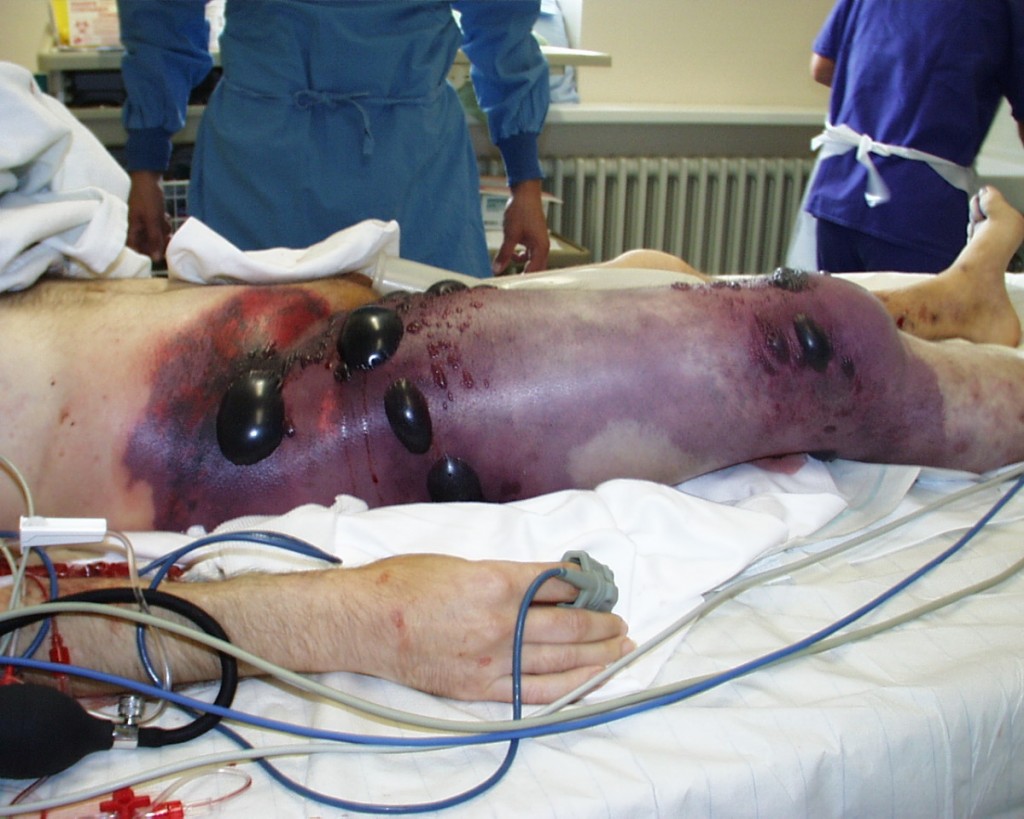What do names mean? Why is a dog named “dog”? These are questions that have perplexed three year old children for eternity – and vexed their parents. In the world of microbiology, organisms are usually named for the people who discovered them, or for a characteristic of the organism. For example, Kingella kingae, a small, Gram-negative coccobacilli that is a common cause of endocarditis is named after the American bacteriologist Elizabeth O. King. Alternatively, an organism can be named after something that it causes, such as Vibrio cholerae, which causes the diarrheal disease cholera.
Clostridia are a genus of Gram-positive, rod shaped bacteria. The genus name, Clostridium, is derived from the Greek term kloster, meaning “spindle”, which fits the spindle-like shape of the organism. Clostridium perfringens is a pathogenic species of Clostridium that causes a wide range of disease in humans – from a limited gastroenteritis to a myonecrosis termed gas gangrene. It is from gas gangrene that Clostridium perfringens gets its name. Perfringens is derived from the Latin, per: “through,” and frango: “to break in pieces, shatter”.
When it occurs, the onset of gas gangrene usually begins within a week of infection with C. perfringens. C. perfringens encodes at least 12 endotoxins, of which one, Alpha toxin, is a lecithinase. Lecithin is a general term for a group of lipids (fats) used in the cells of plants and animals. Alpha toxin specifically cleaves the phospholipid phosphatidylcholine found in the cell membrane of animal cells. Cleavage of the membrane phosphatidylcholine results in the production of diacylglycerol. Diacylglycerol activates the protein kinase C second messenger system. The end result of the second messenger system is a massive increase in inflammation and edema, with devastating and often fatal results.
So now we know how Clostridium perfringens got its name.

The right thigh of a patient suffering from gas gangrene secondary to infection with Clostridium perfringens. Note the massive edema produced by the triggering of the second messenger pathway by Alpha toxin. This patient died 8 hours after admission to the hospital. Image courtesy of: Engelbert Schröpfer, Stephan Rauthe and Thomas Meyer. doi:10.1186/1757-1626-1-252




Gas Gangrene was the number one killer of soldiers during World War 1